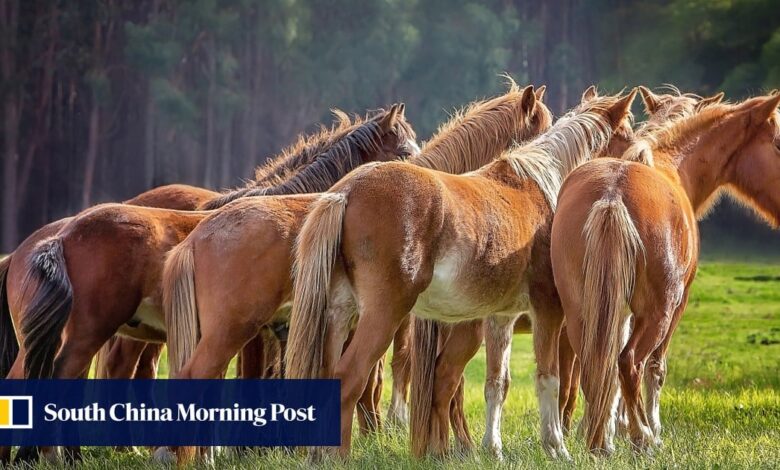Australia to restart ‘essential’ aerial shooting of wild horses to protect native wildlife

An estimated 19,000 wild horses – known locally as “brumbies” – live in Kosciuszko National Park. New South Wales state authorities want to cut that population to 3,000 by mid-2027.
The national park already traps, rehomes and shoots horses from the ground, but the state’s environment minister Penny Sharpe said this was not enough.
This was not an easy decision – no one wants to have to kill wild horses
“Threatened native species are in danger of extinction and the entire ecosystem is under threat,” she said. “We must take action.
“This was not an easy decision – no one wants to have to kill wild horses,” she added.
Aerial shooting from helicopters was used for a brief period in 2000, when more than 600 wild horses were shot over three days.
But a fierce public backlash resulted in the method being banned.

Those against culling say the horses are part of Australia’s national identity, a nostalgic reminder of the days when tough stockmen and women worked in the country’s rugged Snowy Mountains.
Brumbies were celebrated by the Australian “bush poet” Banjo Paterson, who waxed lyrical about a “wild, unhandled” creature who roamed the mountains “neath moon and star”.
Woman recounts terrifying attack by dingo pack after one stole her phone
Woman recounts terrifying attack by dingo pack after one stole her phone
But conservationists are less romantic about a “pest” that they say destroys native plants through grazing and trampling, increases soil erosion, fouls waterholes, and competes with native animals for food and shelter.
“The unique and complex ecosystems of the Australian Alps have been trampled for too long,” said Jacqui Mumford, head of the Nature Conservation Council, an environmental group.
She said brumbies’ activities damaged “at least 25 threatened alpine flora and 14 threatened alpine fauna species, including the iconic corroboree frog, the broad-toothed rat and rare alpine orchids”.

